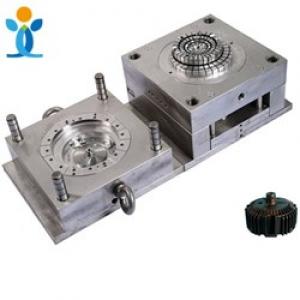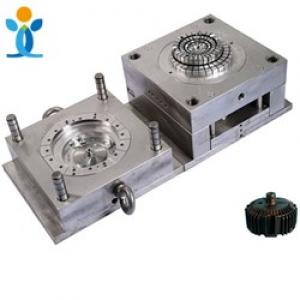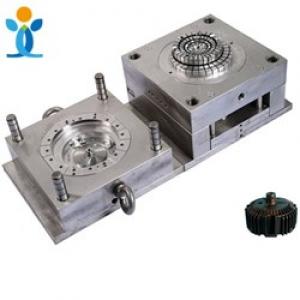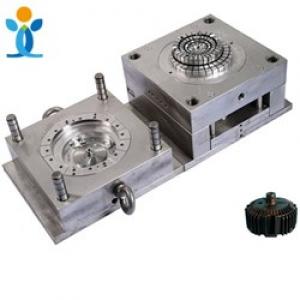key point for mold
Mold manufacturing is a complex process, from design, processing, assembly, debugging and other steps to the final real use. In the whole life cycle, the factors affecting mold quality mainly include the following 10 aspects.
1. Mold steel
Steel is the decisive factor of die quality, and selecting reasonable steel is the top priority. The criteria for selecting steel are:
① Requirements for injection molding materials
Different plastics should use different steels, such as high polishing requirements, corrosion resistance requirements, etc;
② Price
Steel can be used, not the more expensive the better; Considering the cost factor of the die, the die steel shall be made of materials corresponding to the die life to avoid unnecessary waste; The service life of general P20 materials is about 300000; 2738 material is OK at 500000, H13 / 2344 is usually more than 800000-1 million, which can be selected according to the situation;
③ Surface treatment
Mold surface treatment is also very important. Nitriding can enhance the surface hardness of steel and effectively prolong the service life of die; Electroplating can effectively modify die steel. For some plastic parts that need high brightness and corrosion resistance, electroplating can be used to enhance and improve the performance of steel.
2. Structural design
The mature die structure not only takes into account the product material properties, shrinkage, forming temperature, elastic tensile deformation coefficient, but also takes into account the cooling water path, mold opening and closing speed, etc. Reasonable die structure can effectively prolong die life, ensure smooth production, improve efficiency and reduce cost.
3. Mold processing
The arrangement of mold process is particularly important. Reasonable process arrangement can speed up the production cycle, shorten the processing time and effectively save the cost. And more importantly, accurate and reasonable processing can ensure the stability of the mold in the production process and prolong the service life.
Some processing errors will lead to die welding. No matter how good the welding is, it is a loss to the die; In addition, poor processing may affect the action of the die, reduce the service life of the die, and cause the die to crack or even break in the production process.
4. Standard parts
Although standard parts do not directly participate in forming, they control the operation of the whole die. Good standard parts should be wear-resistant, hard enough, high precision and not deformed.
5. mold dump (flying die)
It depends on the experience of die fitter. The seemingly simple work is the most technical work. Complex mold mainly depends on this Kung Fu. The flat die is the simplest. The fractal surface is basically OK as long as there is no flash break.
For example, the mold of auto parts is very troublesome. Not only the fractal surface is irregular, but also it often includes multiple sliding blocks and top blocks. At the same time, it can also improve and perfect other problems of the die through collision, so it is a comprehensive work.
6. Polishing / Dermatoglyphics
Mold polishing is the last link of mold manufacturing. Polishing is directly reflected on the plastic parts, so this is the most face-saving work. Polishing can also help and supplement the mold action, especially for demoulding. Often some mold production is not smooth because the polishing is not in place, the resistance is too large, demoulding is difficult, and even top white, top crack and so on.
7. Mold assembly
Mold assembly is like assembling a machine. Every part and screw can't make mistakes, otherwise the consequences will be quite serious. At least, it will lead to product defects and affect production, or it will completely damage the mold and cause scrapping. Therefore, the assembly work must be very detailed. During assembly, pay special attention to the cleaning of the mold, especially the waterways and screw holes. Be sure to blow away the iron filings inside.
8. Hot runner or cold runner
In fact, this has the least impact on the mold quality, because the hot runner is generally the brand designated by customers, especially some large customers. Foreign well-known brands do a very good job in both quality and after-sales service, so there is generally no problem in quality.
However, the quality of some domestic hot runner varies greatly. In order to save costs and strive for price advantages, individual small enterprises are prone to problems with some unreliable heating and conduction accessories. The main problems of cold runner are how to ensure the balance of injection molding, gate size, injection pressure and so on.
9. Cooling water circuit
People with mold experience know how important cooling is for a mold. Due to the increase of prices and labor wages, it is unimaginable to make profits without reducing the injection molding cycle by one second in mass production.
However, while speeding up the production cycle, the die temperature will rise. If it is not effectively controlled, the die will not be formed due to too hot, and even lead to deformation, failure and scrapping of the die. Therefore, excellent waterway design is particularly important, including waterway layout density, diameter, mutual links and so on.
10. Mold maintenance
Mold maintenance is mainly the maintenance in the production process. Molds are like cars. If they are not used for a long time without maintenance, they may be scrapped. Therefore, after each use of the mold, it is necessary to carry out comprehensive maintenance, especially the rust prevention of the forming part and the rust prevention of the main moving parts.
Because the mold needs to be connected with water during production, it may get on the mold during installation or disassembly, so be sure to ensure that the mold is dry, and then brush a layer of oil for protection.




